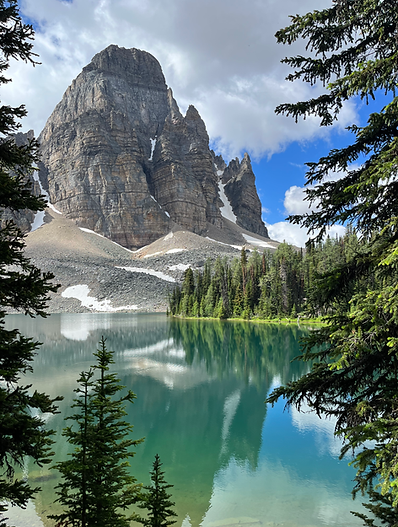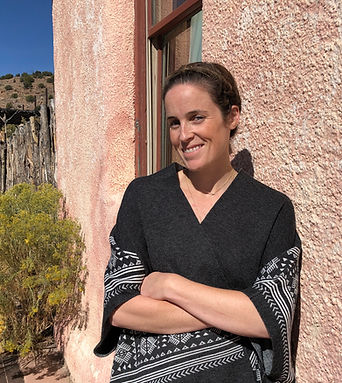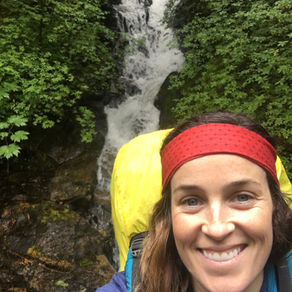



we all have our own mountains to climb



"you have parkinson's disease"
those four little words changed everything
I’m Devon. I am a human rights advocate living in Colorado with a very full life. I love my job, I love my family, I love my friends, and I love the outdoors. I also love challenges; just not this one. After many years of quietly dealing with young-onset Parkinson’s disease, I’ve decided it’s finally time to share my story.

about
continue climbing
Continue Climbing is a platform created to reshape how we think about Parkinson’s disease. When I was first diagnosed with young-onset Parkinson’s, I searched for stories that reflected both the reality of this condition and the possibility of a full, vibrant life beyond the diagnosis. But what I found was limited, clinical, and often discouraging.
So I built the thing I couldn’t find.
This site exists to educate, motivate, and empower. Here, you’ll find honest information and feelings about living with Parkinson’s, but you’ll also see what’s possible—skiing mountains, hiking trails, exploring new countries, finding joy in small moments, and continuing to show up for the people and causes I love. Parkinson’s is a part of my story, but it doesn’t define it—and whatever tough thing you are dealing with doesn't have to define your life either.
So, whether you have Parkinson's disease, are supporting someone with Parkinson’s, or are just curious to learn more, Continue Climbing is a place to find real talk, hard-earned hope, and proof that there is a life worth living—with purpose, challenge, and adventure still ahead.
videos
how I shared my diagnosis with the world














about me
My name is DEVON. I am a lot of things– a partner, a friend, a sister, an advocate, an aunt, a daughter, a writer, a speaker, and a world wanderer.
I am also someone living with Parkinson’s disease.
I’ll be quick with my introduction. My name is Devon. I live in Colorado with my partner and his two wonderful kids. I was overseas for many years, I am a human rights advocate who works on refugee policy and research, and I live with young-onset Parkinson’s disease.
This is definitely not a site I wanted to start. I write about conflicts, politics, human rights, and forced displacement. But sometimes, circumstances push you onto other paths.
I have been dealing with Parkinson’s disease quietly for many years. I told very few people and and never wanted to talk about it publicly. It is still hard for me to believe. However, I have learned that handling a chronic, degenerative, life-changing, debilitating disease is tough, and it is important to see other people facing similar challenges and thriving. So rather than hide my condition as I have been doing, it is finally time to come out of the shadows. I’ll never really ever be ready to talk about this, but I’m going to try. Because it is important to raise awareness and help the world understand that there are people like me with PD.
I am a communicator at heart. So, as I enter a more difficult phase of this disease, I thought writing might be helpful—for me and maybe even others. And honestly, it is just a way for me to process my new reality and continue climbing, whatever that looks like.
And finally, no, I am not really a climber. But I am someone who has an enormous mountain in front of me. So I am going to do my best to keep moving and try to somehow enjoy the view.

Parkinson's disease 101
what is it?
Parkinson’s disease is a progressive neurological disorder that affects how the brain controls movement. It happens when nerve cells in a part of the brain called the substantia nigra become damaged or die. These cells produce dopamine, a chemical that helps coordinate smooth and balanced muscle activity. As dopamine levels drop, people with Parkinson’s begin to experience a range of motor symptoms like tremors, stiffness, slowness of movement, and balance problems. But Parkinson’s isn’t just a movement disorder. It can also impact non-motor functions like sleep, mood, memory, and even digestion. Symptoms usually start gradually and get worse over time, and no two people experience the disease the same way. It’s a complex, often unpredictable condition that affects both the brain and the body in ways that can be frustrating, confusing, and hard to explain—but understanding what’s happening inside the brain is the first step to recognizing and navigating it.
what causes it?
Although doctors still do not know exactly why people get Parkinson's disease, more and more research is pointing to environmental toxins as a major cause of PD—especially in people who don’t have a family history of it. In fact, the vast majority of Parkinson’s cases are considered “sporadic,” meaning they aren’t inherited. Instead, they seem to be triggered by long-term exposure to certain chemicals and pollutants that are surprisingly common. Pesticides like paraquat and rotenone, industrial solvents like trichloroethylene (TCE), and even heavy metals have all been linked to a higher risk of developing Parkinson’s. These substances can damage the brain over time, especially the dopamine-producing cells that are key to movement and coordination. What’s especially concerning is that many of these toxins are in our air, water, soil, and even our workplaces—often without us knowing it. Farmers, factory workers, veterans, and people living near industrial sites or areas with heavy pesticide use seem to be especially at risk. Scientists believe that prolonged exposure to these harmful chemicals can trigger inflammation and oxidative stress in the brain, setting off the slow but steady loss of dopamine-producing neurons. While genetics can play a role, it’s increasingly clear that Parkinson’s is, for many people, an environmental disease—one we might prevent more effectively by reducing toxic exposures in the world around us.
what to do?
Parkinson’s disease has no cure, and as of now, there’s no treatment that can stop or even slow the progression of the disease itself. It’s a degenerative condition, which means it gradually gets worse over time as more dopamine-producing brain cells are lost. Medications can help manage some of the symptoms—like tremors, stiffness, and slowness—but they don’t address the underlying cause or prevent further damage to the brain. It’s a hard truth that many people with Parkinson’s face: while treatment can improve quality of life, it doesn’t halt the disease. That said, one of the most powerful ways to manage Parkinson’s is also one of the most accessible—exercise. Vigorous, consistent physical activity has been shown to significantly improve motor symptoms, boost mood, and support brain health. It’s not a cure, but it’s one of the only things that’s been shown to actually change the trajectory of how people feel and function over time. Whether it’s biking, boxing, hiking, or dancing, staying active isn’t just recommended—it’s essential. For many, movement becomes medicine.
what's new?
Scientists are working hard to try and figure out two things: what causes it and a way to treat it, beyond just managing the symptoms. One of the most promising areas of research is using stem cells to actually replace the brain cells that Parkinson’s has damaged. In early trials, some people who received these cell transplants have seen marginal improvements in their movement, and bigger trials are now underway to see how well it works for more people. Researchers are also experimenting with gene therapy, which involves delivering certain genes directly to the brain to protect or revive dopamine-producing cells. These interventions aren’t ready for widespread use yet, but they offer real hope for changing the course of the disease in the future. On the technology side, deep brain stimulation—a surgery that helps control symptoms with tiny electrical signals—is becoming even smarter. A newer version called adaptive DBS can adjust itself in real time based on what your brain needs, which means fewer side effects and better results. There are also new medications being tested that may help the brain work better with less dopamine or clear out the harmful buildup that contributes to cell damage. It’s still early days, but with so many researchers focused on Parkinson’s (although some of the funding has recently been cut in the U.S.), we can hope for a better future.
resources
Because Parkinson’s is the fastest growing brain disease in the world and more and more young people are being diagnosed with it each year, there are some good resources out there for more information and with advice on how to live the best one can with this tough condition. Some of these resources include:
The Michael J. Fox Foundation is one of the most well-known, funding groundbreaking research and pushing for a cure with unmatched energy.
The Parkinson’s Foundation offers education, resources, and community programs to help people live better with the disease today.
The Davis Phinney Foundation focuses on helping people with Parkinson’s through exercise, wellness, and practical tools.
The Brian Grant Foundation offers accessible fitness and nutrition resources to help people live their best lives with PD.








